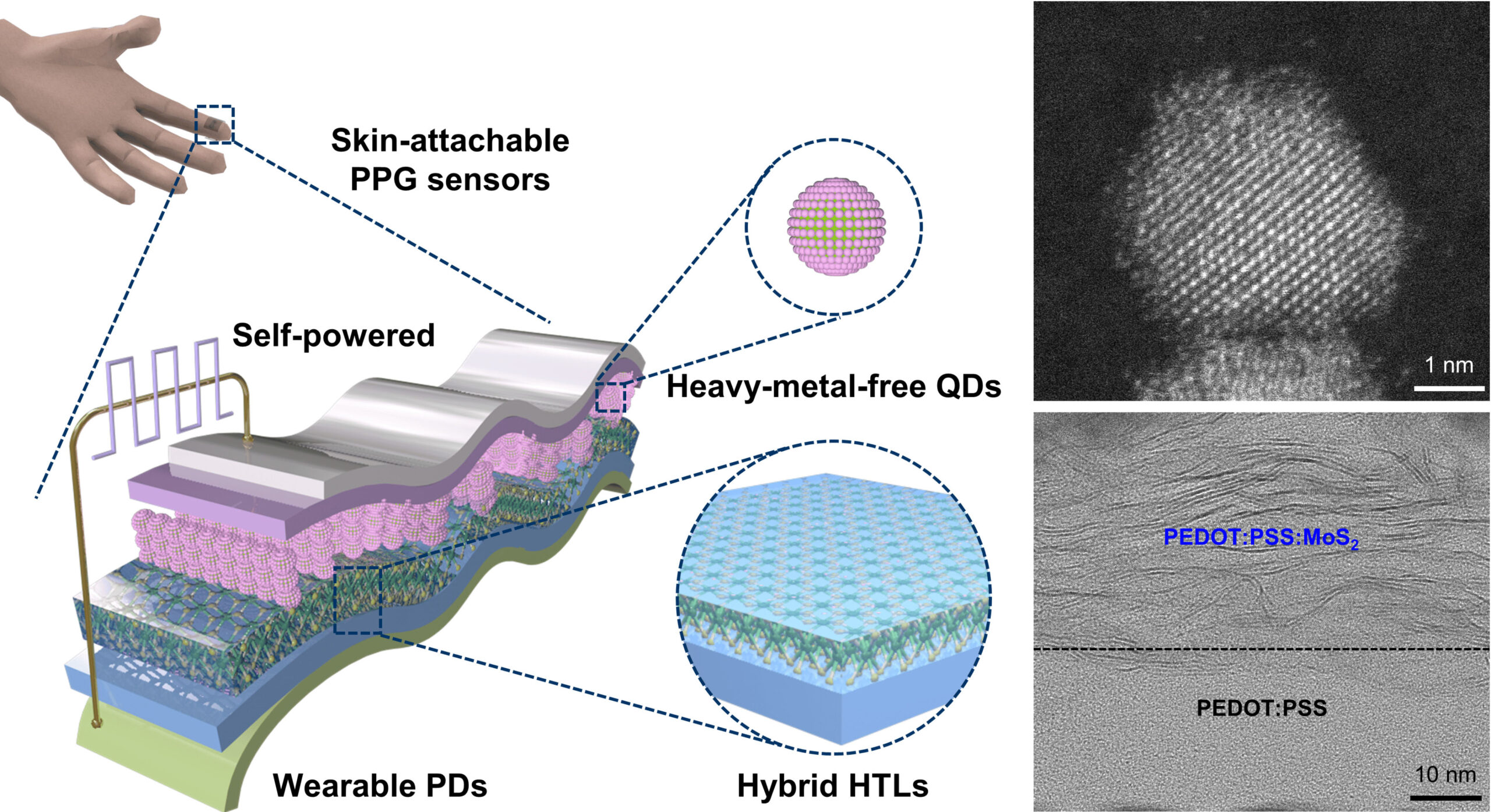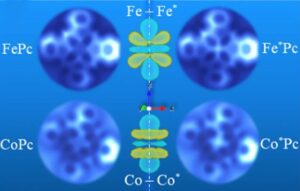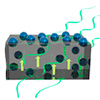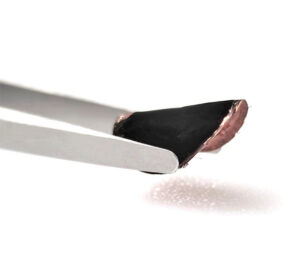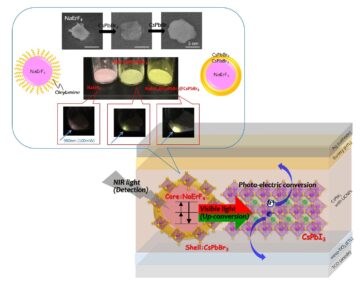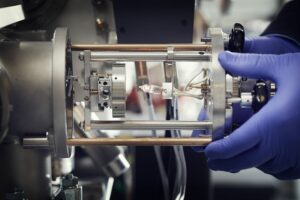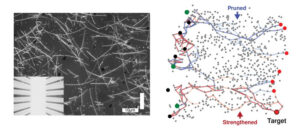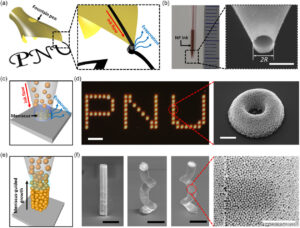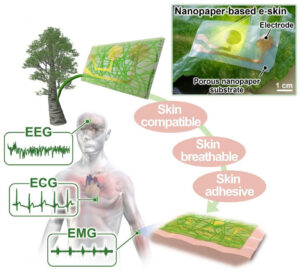| Dec 08, 2023 |
|
(Nanowerk News) At Daegu Gyeongbuk Institute of Science and Technology (DGIST), Professor Ji-woong Yang from the Department of Energy Science and Engineering has achieved a groundbreaking feat. Collaborating with Professor Moon-kee Choi's team at Ulsan National Institute of Science and Technology's Department of New Materials Engineering and Professor Dae-hyeong Kim's group at Seoul National University's Department of Chemical and Biomolecular Engineering, they have developed the world's most advanced eco-friendly quantum dot photosensor. Remarkably, this device functions without any external power, harnessing the photovoltaic effect for stable light signal measurement.
|
|
These results have been published in ACS Nano ("Ultrathin Self-Powered Heavy-Metal-Free Cu–In–Se Quantum Dot Photodetectors for Wearable Health Monitoring").
|
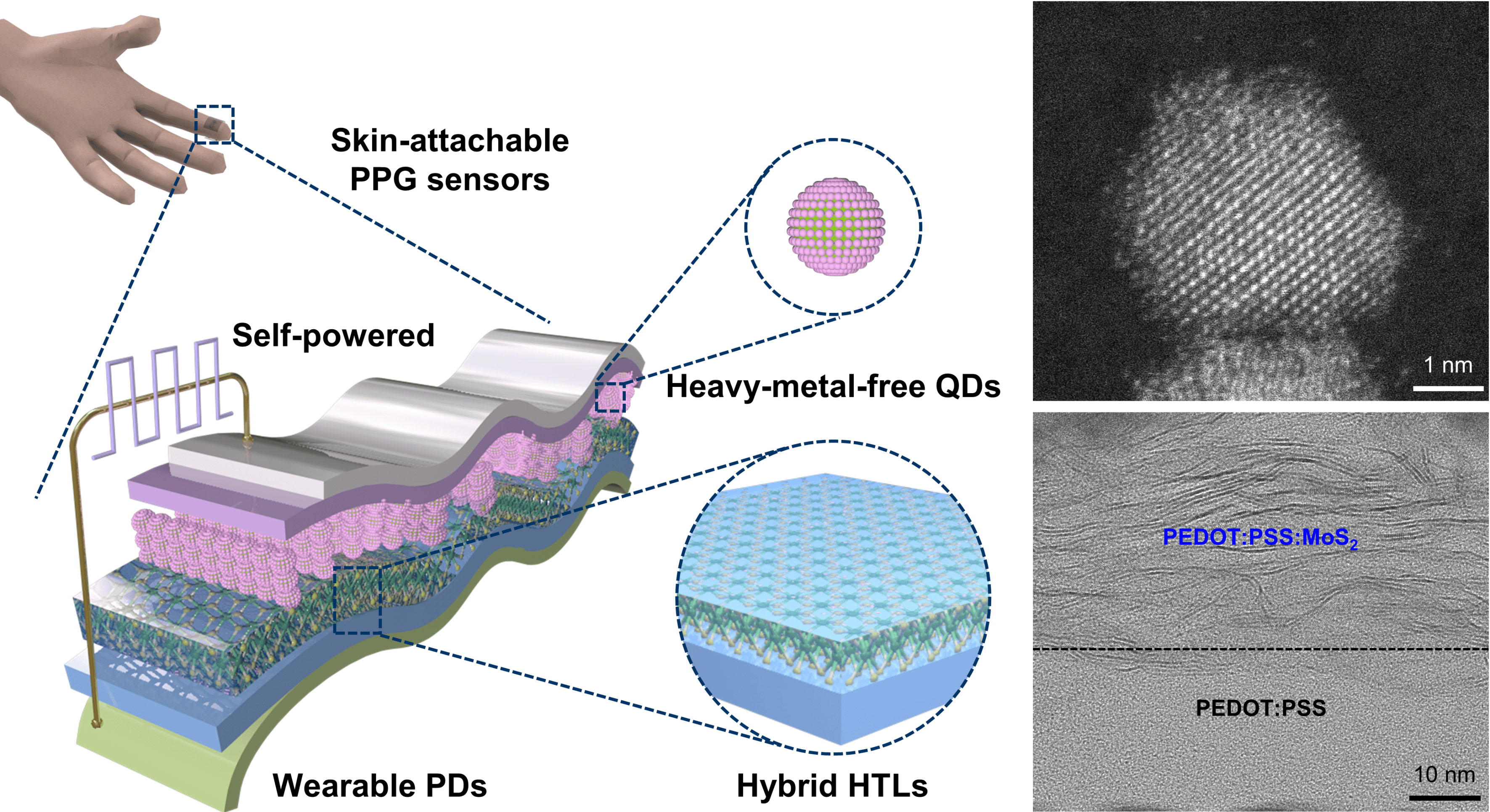 |
| Graphical abstract of the work. (Image: DGIST)
|
|
This innovation is particularly relevant today, as the aging population and the COVID-19 pandemic amplify the need for healthcare monitoring devices that can be worn comfortably for extended periods. Traditional silicon-based photosensors, often deemed too heavy and rigid for long-term wear, struggle to accurately capture biometric signals due to their inability to maintain close skin contact.
|
|
In a significant scientific advancement, this year's Nobel Prize in Chemistry honored three scientists for their pioneering work on quantum dots, the building blocks of nanoscience. These ultra-small semiconductor particles, measuring mere nanometers, possess superior optical and electrical properties compared to conventional semiconductors. This enables faster electron and electron hole separation, making them ideal for photosensor applications. However, most quantum dot photosensors in current research are thick, micrometer-scale structures often containing toxic heavy metals like lead sulfide, rendering them unsuitable for wearable technology.
|
|
Defying general assumptions about the inferior performance of eco-friendly quantum dots, the research team has revolutionized this area. They enhanced the electrical properties of copper-indium-selenide (Cu-In-Se) quantum dots, free from heavy metals, through meticulous control of their size and composition. Additionally, they developed an innovative organic-inorganic hybrid charge transfer layer tailored for these quantum dots, culminating in an eco-friendly photosensor that outperforms its toxic counterparts.
|
|
The team's eco-friendly quantum dot photosensor exhibits exceptional performance with a quantum dot absorption layer of just about 40 nanometers. It also demonstrates remarkable light-detection capabilities without needing an external power source, making it highly suitable for wearable photosensor applications. The researchers further extended this technology by creating a wearable pulse sensor. This sensor combines the photosensor with a light source on a flexible polymer substrate, ensuring stable operation even under significant curvature and during various physical activities like walking and running.
|
|
In their comments, DGIST's Professor Ji-woong Yang highlighted the success in developing a high-performance eco-friendly quantum dot photosensor through strategic structural control and layer optimization. Meanwhile, UNIST's Professor Moon-kee Choi envisioned diverse applications for this technology, ranging from lidar and infrared cameras to next-generation wearable healthcare monitoring systems, thanks to its ultra-thin, highly flexible design and independence from external power sources.
|
- SEO Powered Content & PR Distribution. Get Amplified Today.
- PlatoData.Network Vertical Generative Ai. Empower Yourself. Access Here.
- PlatoAiStream. Web3 Intelligence. Knowledge Amplified. Access Here.
- PlatoESG. Carbon, CleanTech, Energy, Environment, Solar, Waste Management. Access Here.
- PlatoHealth. Biotech and Clinical Trials Intelligence. Access Here.
- Source: https://www.nanowerk.com/nanotechnology-news2/newsid=64218.php


